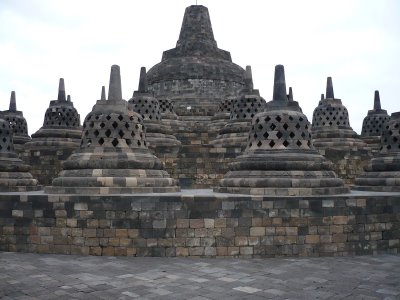Borobudur Temple is the best masterpiece of the famous Hindu and Buddhist heritage in the archipelago. In this historical building, there are carvings in 2,672 reliefs on the walls of the temple, which was built in 770 AD, like a complete ancient data center. One of them is to keep important records regarding Indonesia’s biodiversity with the presence of carvings of several species of fauna.
At the temple, which is located in Magelang Regency, Central Java Province, there are 315 individual fauna and 63 types of flora carved on the reliefs. Relief Lalitavistara tells the life journey of Lord Buddha Sidharta Gautama and reliefs Karmawibhangga which tells about the law of cause and effect. These reliefs are located at the base of the temple with six square terraces.
Reliefs depicting fauna and their use by the community at that time have become the most comprehensive catalog of ancient Javanese species today. This was revealed based on a recent study conducted by the Indonesian Institute of Sciences (LIPI) and the Borobudur Conservation Center (BKB). The study regarding the fauna relief in Borobudur was carried out through a discussion method with experts with different scientific backgrounds. They consist of experts in reptiles, mammals, aves, molluscs, and fish. This is also related to the procedure for identifying fauna species based on morphology, behavioral characteristics, and psychological features. This was stated by the Acting Head of Zoology at the Center for Biological Research at LIPI Cahyo Rahmadi when he was a speaker at the online seminar entitled “Knowledge Sharing Behind Borobudur Production” which was held by LIPI some time ago.
Based on observations and studies conducted by experts at the Center for Biological Research, LIPI and BKB, it was found that of the 120 story panels in the Lalitavistara relief, as many as 61 panels of which have animal carvings in it. Panil is a relief piece on each temple wall that contains a story about each other.
The fauna carvings consist of 52 types of animals, of which 47 are identified to the species level and five other animals to the family level. LIPI and BKB experts found that of the 52 species and families identified on the temple reliefs, they were divided into classes such as actinopterygii (fish), aves (birds), gastropods (snails), mammals, and reptiles.
The identification results also found that there were 4 species of actinopterygii from 4 families and 21 species of aves from 15 families. Only 1 species of gastropods were found in the reliefs and 23 species of mammals from 18 families and three species of reptiles from 3 families. The animals identified include, among others, elephants, and deer m peaks (Muntiacus muntjak) or kidang in Javanese. There is also a black sparrow bird (Ratufa bicolor) or also known as jiarang, sparrow bird (Estrildidae), and striped tiger (Panthera tigris).
Of the 52 identified species, only one fauna that did not exist in the ancient archipelago, namely the lion, can be found in India, the origin of the Lalitavistara Book. Cahyo suspects, most likely the animal was written in the Lalitavistara script so that it was carved in Borobudur.
The panel with the most animal species carvings is about the story of a Bodhisattva (future Buddha) who would cross the Ganges when it was overflowing. In this relief, nine types of fauna are carved in it. In addition, the most abundant fauna scattered in the panels is the green peacock (Pavo muticus), which is sculpted on 15 reliefs. “We are very amazed to see this in the context of a very detailed illustration, so in accordance with the reality or life of each species that exists. The sculptors were taxonomists, ecologists, ethologists, and science illustrators, “said Cahyo.
He explained that currently researchers have to go in and out of the forest to observe fauna behavior. Meanwhile, the relief sculptors at Borobudur Temple are like biologists who understand not only flora and fauna but also the biological aspects that exist in every image carved by them. These carvers are able to carve in detail and correct the type of animal according to their habitat. For example, on a panel there are carvings of birds and monkeys in trees and crocodiles basking in the river.
Studies on the meaning of the presence of fauna species are important and interesting to complement the story of the panels and add to the value of Borobudur Temple as a historical and educational tour. In addition, the appearance of fauna in these temples can provide a picture of the existence of each species in Java and offer a more complete picture of the environment.
Borobudur Temple is suitable as a tourist destination for those of you who want to learn the history of the entry of Buddhism in the archipelago. Come on, get interesting information from Indonesiar.com to add to your insight.































